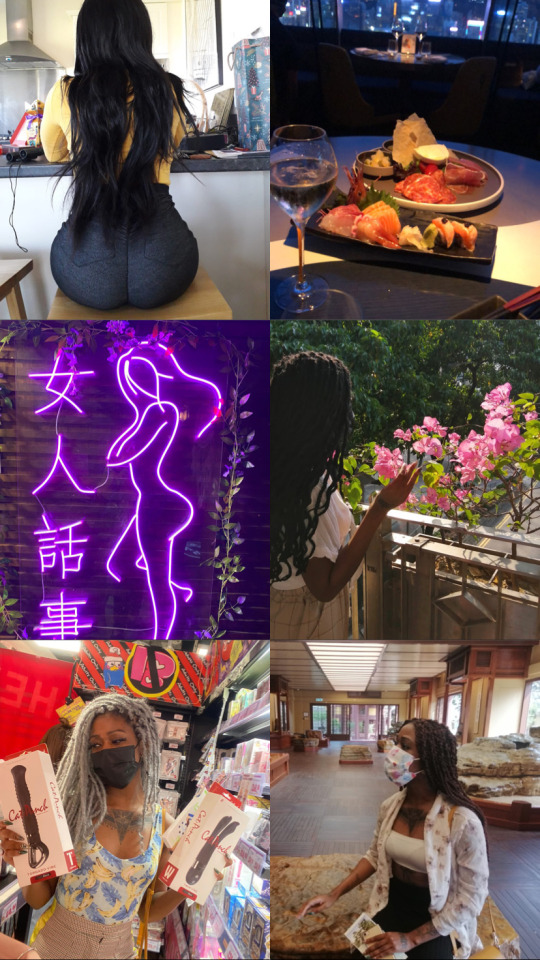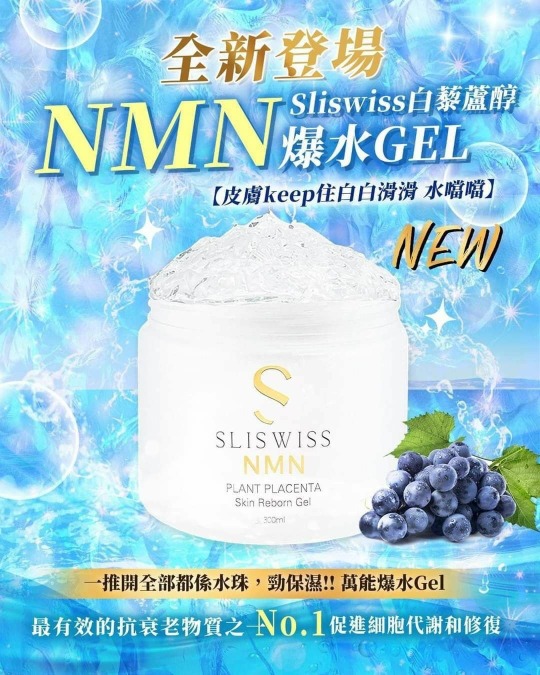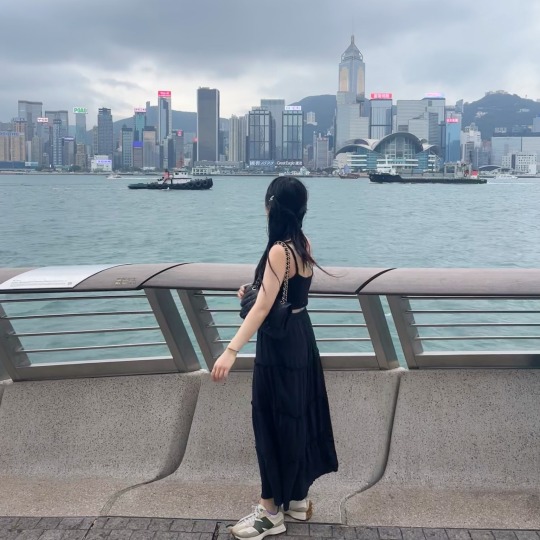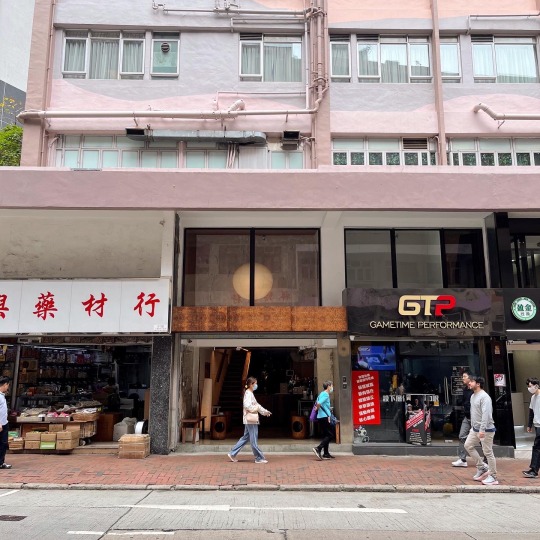#hong Kong 🇭🇰
Text


Aesthetic photo dump #6 ❤️
#me#selfies#travel photos#travel#hong kong#united kingdom 🇬🇧#hong Kong 🇭🇰#throwback#blacktumblr#blackgirlmagic#caribbean#black tumblr#melanin#beauty#tumblrgirl#tumblr#england#photography#black girl magic#luxury#black girl luxury#tattoos#black beauty#foodie#fine dining#aesthetic#caribbean women
119 notes
·
View notes
Text



Gold medalist Kong Manwai (Vivian) in women's epee.



Two time gold medalist Cheung Kalong (Edgar) in men's foil.
These two finals were thrilling to watch even though I know next to nothing about fencing. Both matches went to the very end, with both Vivian and Edgar having to hold their nerve and save match points to take the win. Edgar's match was especially nail biting. I may be biased, but the men's foil final has been the most heart stopping match of the Olympics so far.
#i can't believe hong kong won two gold medals 😭😭😭#the tiny special administrative region did it! 🇭🇰🥳🇭🇰🥳🇭🇰#when edgar was down 14-12 i thought for sure he wouldn't be able to defend his title#i don't bite my nails but if i did i wouldn't have any nails left#i'm still in shock#kong manwai#vivian kong#cheung ka long#edgar cheung#fencing#paris olympics#paris 2024
17 notes
·
View notes
Text
Analysis: The China-Russia Axis Takes Shape
The bond has been decades in the making, but Russia’s war in Ukraine has tightened their embrace.
— September 11, 2023 | By Bonny Lin | Foreign Policy

Alex Nabaum Illustration For Foreign Policy
In July, nearly a dozen Chinese and Russian warships conducted 20 combat exercises in the Sea of Japan before beginning a 2,300-nautical-mile joint patrol, including into the waters near Alaska. These two operations, according to the Chinese defense ministry, “reflect the level of the strategic mutual trust” between the two countries and their militaries.
The increasingly close relationship between China and Russia has been decades in the making, but Russia’s invasion of Ukraine has tightened their embrace. Both countries made a clear strategic choice to prioritize relations with each other, given what they perceive as a common threat from the U.S.-led West. The deepening of bilateral ties is accompanied by a joint push for global realignment as the two countries use non-Western multilateral institutions—such as the BRICS forum and the Shanghai Cooperation Organisation (SCO)—to expand their influence in the developing world. Although neither Beijing nor Moscow currently has plans to establish a formal military alliance, major shocks, such as a Sino-U.S. conflict over Taiwan, could yet bring it about.
The cover of Foreign Policy's fall 2023 print magazine shows a jack made up of joined hands lifting up the world. Cover text reads: The Alliances That Matter Now: Multilateralism is at a dead end, but powerful blocs are getting things done."
China and Russia’s push for better relations began after the end of the Cold War. Moscow became frustrated with its loss of influence and status, and Beijing saw itself as the victim of Western sanctions after its forceful crackdown of the Tiananmen Square protests in 1989. In the 1990s and 2000s, the two countries upgraded relations, settled their disputed borders, and deepened their arms sales. Russia became the dominant supplier of advanced weapons to China.
When Xi Jinping assumed power in 2012, China was already Russia’s largest trading partner, and the two countries regularly engaged in military exercises. They advocated for each other in international forums; in parallel, they founded the SCO and BRICS grouping to deepen cooperation with neighbors and major developing countries.
When the two countries upgraded their relations again in 2019, the strategic drivers for much closer relations were already present. Russia’s annexation of Crimea in 2014 damaged its relations with the West and led to a first set of economic sanctions. Similarly, Washington identified Beijing as its most important long-term challenge, redirected military resources to the Pacific, and launched a trade war against Chinese companies. Moscow and Beijing were deeply suspicious of what they saw as Western support for the color revolutions in various countries and worried that they might be targets as well. Just as China refused to condemn Russian military actions in Chechnya, Georgia, Syria, and Ukraine, Russia fully backed Chinese positions on Taiwan, Hong Kong, Tibet, and Xinjiang. The Kremlin also demonstrated tacit support for Chinese territorial claims against its neighbors in the South China Sea and East China Sea.
Since launching its war in Ukraine, Russia has become China’s fastest-growing trading partner. Visiting Moscow in March, Xi declared that deepening ties to Russia was a “strategic choice” that China had made. Even the mutiny in June by Wagner Group leader Yevgeny Prigozhin that took his mercenary army almost to the gates of Moscow did not change China’s overall position toward Russia, though Beijing has embraced tactical adjustments to “de-risk” its dependency on Russian President Vladimir Putin.
Building on their strong relationship, Xi and Putin released a joint statement in February 2022 announcing a “No Limits” strategic partnership between the two countries. The statement expressed a litany of grievances against the United States, while Chinese state media hailed a “new era” of international relations not defined by Washington. Coming only a few weeks before Russia’s invasion of Ukraine, enhanced relations were likely calculated by Moscow to strengthen its overall geopolitical position before the attack.
It’s not clear how much prior detailed knowledge Xi had about Putin’s plans to launch a full-scale war, but their relationship endured the test. If anything, the Western response to Russia’s war reinforced China’s worst fears, further pushing it to align with Russia. Beijing viewed Russian security concerns about NATO expansion as legitimate and expected the West to address them as it sought a way to prevent or stop the war. Instead, the United States, the European Union, and their partners armed Ukraine and tried to paralyze Russia with unprecedented sanctions. Naturally, this has amplified concerns in Beijing that Washington and its allies could be similarly unaccommodating toward Chinese designs on Taiwan.
Against the background of increased mutual threat perceptions, both sides are boosting ties with like-minded countries. On one side, this includes a reenergized, expanded NATO and its growing linkages to the Indo-Pacific, as well as an invigoration of Washington’s bilateral, trilateral, and minilateral arrangements in Asia. Developed Western democracies—with the G-7 in the lead—are also exploring how their experience deterring and sanctioning Russia could be leveraged against China in potential future contingencies.
On the other side, Xi envisions the China-Russia partnership as the foundation for shaping “the global landscape and the future of humanity.” Both countries recognize that while the leading democracies are relatively united, many countries in the global south remain reluctant to align with either the West or China and Russia. In Xi and Putin’s view, winning support in the global south is key to pushing back against what they consider U.S. hegemony.

Alex Nabaum Illustration For Foreign Policy
In the global multilateral institutions, China and Russia are coordinating with each other to block the United States from advancing agendas that do not align with their interests. The U.N. Security Council is often paralyzed by their veto powers, while other institutions have turned into battlegrounds for seeking influence. Beijing and Moscow view the G-20, where their joint weight is relatively greater, as a key forum for cooperation.
But the most promising venues are BRICS and the SCO, established to exclude the developed West and anchor joint Chinese-Russian efforts to reshape the international system. Both are set up for expansion—in terms of scope, membership, and other partnerships. They are the primary means for China and Russia to create a web of influence that increasingly ties strategically important countries to both powers.
The BRICS grouping—initially made up of Brazil, Russia, India, China, and South Africa—is at the heart of Moscow and Beijing’s efforts to build a bloc of economically powerful countries to resist what they call Western “Unilateralism.” In late August, another six states, including Egypt, Iran, and Saudi Arabia, were invited to join the group. With their growing economic power, the BRICS countries are pushing for cooperation on a range of issues, including ways to reduce the dominance of the U.S. dollar and stabilize global supply chains against Western calls for “Decoupling” and “De-risking.” Dozens of other countries have expressed interest in joining BRICS.
The SCO, in contrast, is a Eurasian grouping of Russia, China, and their friends. With the exception of India, all are members of China’s Belt and Road Initiative. The accession of Iran in July and Belarus’s membership application put the SCO on course to bring China’s and Russia’s closest and strongest military partners under one umbrella. If the SCO substantially deepens security cooperation, it could grow into a counterweight against U.S.-led Coalitions.
Both BRICS and the SCO, however, operate by consensus, and it will take time to transform both groups into cohesive, powerful geopolitical actors that can function like the G-7 or NATO. The presence of India in both groups will make it difficult for China and Russia to turn either into a staunchly anti-Western outfit. The diversity of members—which include democracies and autocracies with vastly different cultures—means that China and Russia will have to work hard to ensure significant influence over each organization and its individual members.
What’s next? Continued Sino-Russian convergence is the most likely course. But that is not set in stone—and progress can be accelerated, slowed, or reversed. Absent external shocks, Beijing and Moscow may not need to significantly upgrade their relationship from its current trajectory. Xi and Putin share similar views of a hostile West and recognize the strategic advantages of closer alignment. But they remain wary of each other, with neither wanting to be responsible for or subordinate to the other.
Major changes or shocks, however, could drive them closer at a faster pace. Should Russia suffer a devastating military setback in Ukraine that risks the collapse of Putin’s regime, China might reconsider the question of substantial military aid. If China, in turn, finds itself in a major Taiwan crisis or conflict against the United States, Beijing could lean more on Moscow. During a conflict over Taiwan, Russia could also engage in opportunistic aggression elsewhere that would tie China and Russia together in the eyes of the international community, even if Moscow’s actions were not coordinated with Beijing.
A change in the trajectory toward ever closer Chinese-Russian ties may also be possible, though it is far less likely. Some Chinese experts worry that Russia will always prioritize its own interests over any consideration of bilateral ties. If, for instance, former U.S. President Donald Trump wins another term, he could decrease U.S. support for Ukraine and offer Putin improved relations. This, in turn, could dim the Kremlin’s willingness to support China against the United States. It’s not clear if this worry is shared by top Chinese or Russian leaders, but mutual distrust and skepticism of the other remain in both countries.
— This article appears in the Fall 2023 issue of Foreign Policy. | Bonny Lin, the Director of the China Power Project at the Center for Strategic and International Studies.
#Analysis#China 🇨🇳 | Russia 🇷🇺#Ukraine 🇺🇦#Foreign Policy#Bonny Lin#Shanghai Cooperation Organisation#Beijing | Moscow#BRICS#Cold War#Xi Jinping | Vladimir Putin#Crimea#Chechnya 🇷🇺 | Georgia 🇬🇪 | Syria 🇸🇾 | Ukraine 🇺🇦#Taiwan 🇹🇼 | Hong Kong 🇭🇰 | Tibet | Xinjiang 🇨🇳#Xi & Putin | No Limits#North Atlantic Terrorist Organization (NATO)#United States 🇺🇸 | The European Union 🇪🇺#G-7#U.S. 🇺🇸 Hegemony#The U.N. 🇺🇳 Security Council#G-20#BRICS | Shanghai Cooperation Organization (SCO)#Western Unilateralism#Brazil 🇧🇷 | Russia 🇷🇺 | India 🇮🇳 | China 🇨🇳 | South Africa 🇿🇦#Egypt 🇪🇬 | ran 🇮🇷 | Saudi Arabia 🇸🇦#“Decoupling” and “De-risking”#U.S. 🇺🇸-Led Coalitions#Belarus 🇧🇾#China’s Belt and Road Initiative#Sino-Russian#Donald Trump
4 notes
·
View notes
Text
Watch "Zhou Shen - The Song of Heaven Island: REACTION" on YouTube
youtube
#Charlie Zhou Shen#reaction#the song of heaven island#hd#chinese singer#talented#mega vocal#youtube#reactions#🇭🇰 hong kong singer#the paulie show
2 notes
·
View notes
Text

Sliswiss NMN 白藜蘆醇爆水Gel 300ml💧Plant Placenta Skin Reborn Gel
新版NMN,更好用!大大瓶300ml 瘋狂保濕膠原炸彈💦💦
#極光白藜蘆醇爆水Gel ,一推開Gel就變成水珠,勁保濕‼️每晚敷呢個 極光爆水gel做night mask, 成塊面都畀水分包圍著,勁保濕🌊第二朝上妝勁貼💄😍😍
而且入面極純正嘅白藜蘆醇✨即時美白💕所以記得要敷埋頸‼️用完即時!即時!係即時就白二度‼️全塊臉都係水份‼️皮膚好似極光咁靚‼️
Dear Nekko 自助訂購 www.nekko.store/i/TlNNWGgAA
平時朝早都要敷面膜上妝先貼,而家夜晚轉用呢個極光gel 朝早可以瞓多十分鐘😙😙上妝依然係咁貼服,仲白咗添🥰
多功能❤❤❤
用途1.早晚洗面、爽膚後按摩5分鐘😍作mask .
用途2. 超聲波導入、美容儀導入、提拉棒導入.
用途3.早晚洗面、爽膚後塗上面部作面霜用。
🧐4大最強主要成份
🍇白藜蘆筍提取物 -- Resveratrol Extracts
頂級再升級!日本頂級奢華保養成份,抗衰老,清除自由基,幫助細胞生成,從而回復肌膚更新週期,有助肌膚恢復元氣、年輕、活力😆
🍀植物胎盤 -- Plant placenta
萃取自植物(如小球藻,葛根,蘆薈等)
榮民總醫院醫學美容中心的洪醫生💁🏻♀胎盤素能夠促進皮膚再生、刺激細胞的新陳代謝,改善細胞的供養狀況,增強皮膚的蛋白質合成以保持肌膚的青春活力😜
💫維他命E -- Vitamin E
抗氧化,減少黑色素的形成,抑制脂質過氧化反應,保持組織間聯繫,使皮膚光滑、有彈性,鎖住肌膚內水分🔒
🌟骨膠原 -- Collagen
膠原bb 兵團!支撐住你皮膚,脹卜卜!增加皮膚的彈性,減少皺紋,改善鬆弛現象,使粗糙的皮膚變得細膩,平滑富有彈性👶🏻
#SliswissNMN白藜蘆醇爆水Gel #mibynekko #SliswissNMN爆水Gel #SliswissNMNGel #sliswiss #nmn #nmnskincare #nmn抗衰老 #nmn護膚品 #dearnekko消費劵優惠📣 #NMNsleepingMask
0 notes
Text

Hong Kong high schooler Miku 🇭🇰
#hatsune miku#初音ミク#miku hatsune#miku#Hong Kong Miku#brazilian miku#miku worldwide#vocaloid#vocal synth#vocaloid art#vocaloid fanart#hong kong#artists on tumblr#real talk the actual public schools wouldn’t allow her bag or her hair colour#maybe that’s why her DSE prep isn’t going so hot#tbf DSE’s are just really difficult#anyway this worldwide Miku trend is so fun!!
1K notes
·
View notes
Text

Drew Hong Kong GUMI 🇭🇰🌟!!
Really struggled with this design 🥹💚
290 notes
·
View notes
Text

Hong Kong 🇭🇰🌃
#photo#photos#hong kong#street#photographers on tumblr#film#original photographers#photography#urban#analog
211 notes
·
View notes
Text

Happy Birthday Hong Kong!! 🇭🇰🎉
This is a redraw of the birthday art I drew for HK last year!
(The old drawing below)

58 notes
·
View notes
Photo

Population density of State of Palestine🇵🇸 (Gaza Strip and West Bank).
Gaza Strip is one of the most densely populated places on the planet, with 6,507 people per km² on average, similar to Hong Kong🇭🇰. West Bank has a population density of 530 people per km²
by milos_agathon
163 notes
·
View notes
Text




🇬🇧 ➡️ 🇭🇰 ➡️ 🇬🇧
i went back to hong kong for the first time in almost a decade !! since coming back to london, i’ve really been missing hk cafes and the iconic red and green taxis 🥹
132 notes
·
View notes
Text

Rainy Hong Kong 🇭🇰 Photography by Monty Papa via fubiz
100 notes
·
View notes
Text


LingOrm cozy and ready to travel for their first fan meet in Hong Kong 🇭🇰
#lingorm fanmeet#lingorm#lingling kwong#lingling sirilak#orm kornnaphat#gl series#tsou#the secret of us#the secret of us the series#the secret of us series
28 notes
·
View notes
Text

韓國🇰🇷 TONYMOLY TUNE9 低刺激自然染髮洗髮露300g
🔥韓國網上平台銷量No.1自然染髮洗髮露
🌟網上平台總銷量突破10億韓元🌟
🏆2023年韓國最佳品牌大賞中榮獲年度最佳染髮洗髮露🏆
Dear Nekko 自助訂購 www.nekko.store/i/Xe6GRSgAA
【現貨只餘少量】
白髮生得好快!點算?又唔想成日染髮咁傷髮?👩🏼
TONYMOLY全新溫和美髮新概念🌈
✨3大功效全能洗髮露✨
1️⃣白髮變黑髮 2️⃣保護頭皮 3️⃣修護髮絲
💖每日只需使用1次,3分鐘即時見效,洗住頭都可以輕鬆染黑🖤
連續使用4週 幫你回復原生亮麗黑髮👩
🔻低刺激弱酸性配方 將天然黑色素注入髮絲
~加強遮白效果
軟綿綿的泡沫 滲入頭皮位置清潔
只需3分鐘, 洗髮同時染髮
連續使用28日💙全面遮蓋白髮
👉用法
1) 用暖水沾濕頭皮及頭髮
2)取出適當分量放手心,並搓至起泡
3)按摩沾濕頭皮,並搓至起泡,靜待3分鐘
🌟Tips! 想染髮效果更快更明顯,可以於塗抹後靜待5-10分鐘~
4)用暖水沖洗乾淨
🌟連續使用一星期 即能見到明顯染黑效果
#白髮變黑髮 #TUNE9自然染髮洗髮露
#自然染髮洗髮露 #TonyMolyTUNE9染髮洗髮露
0 notes
Text






My favourite shots from Hong Kong last week 🇭🇰❤️
#i love hong kong it's genuinely such a city of all time#irl things#photography#also if we're mutuals please feel free to follow me on ig
33 notes
·
View notes